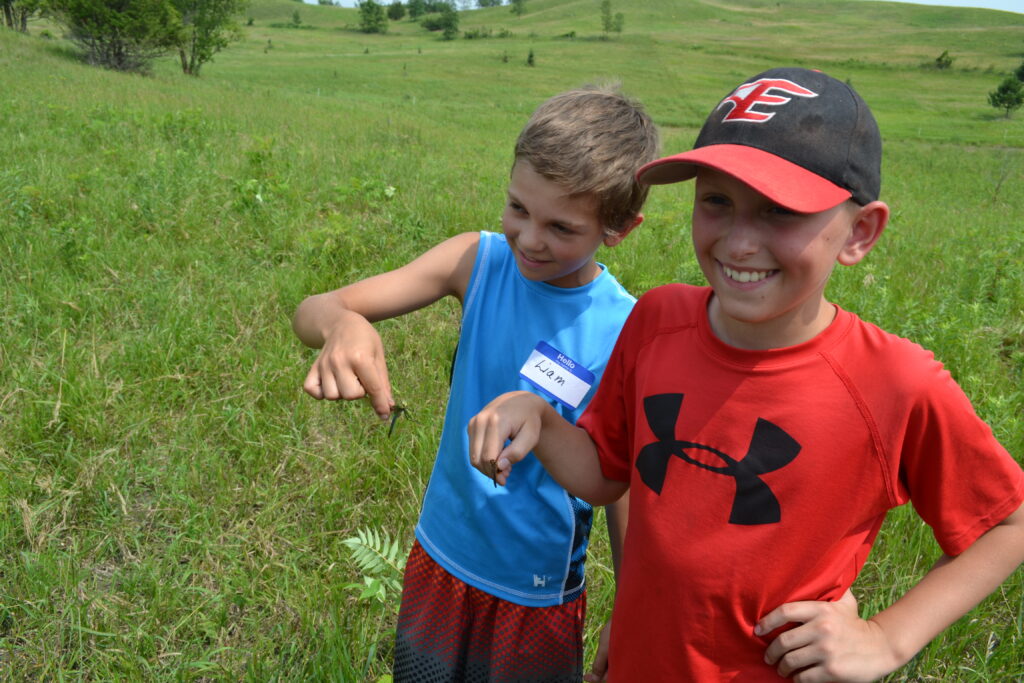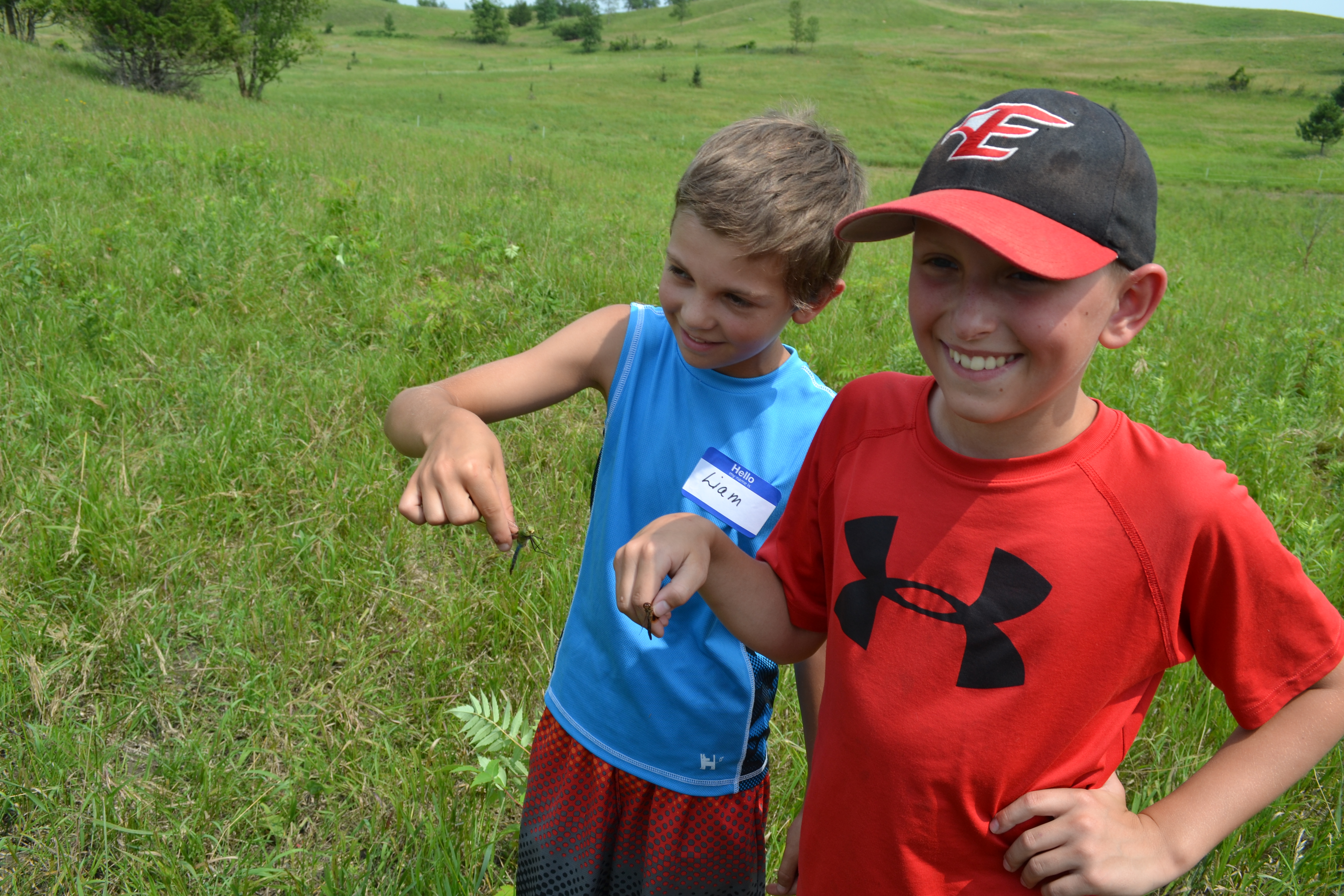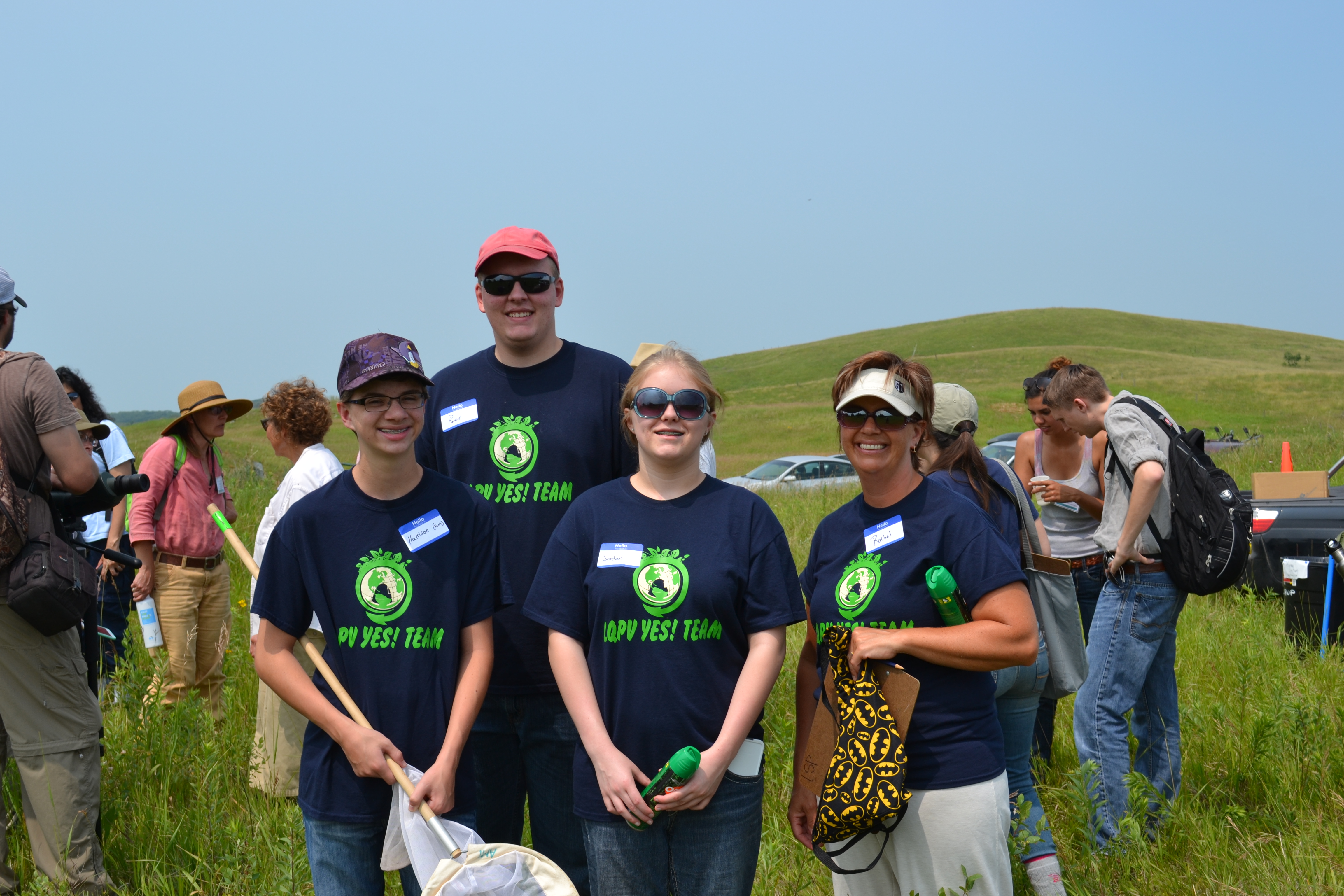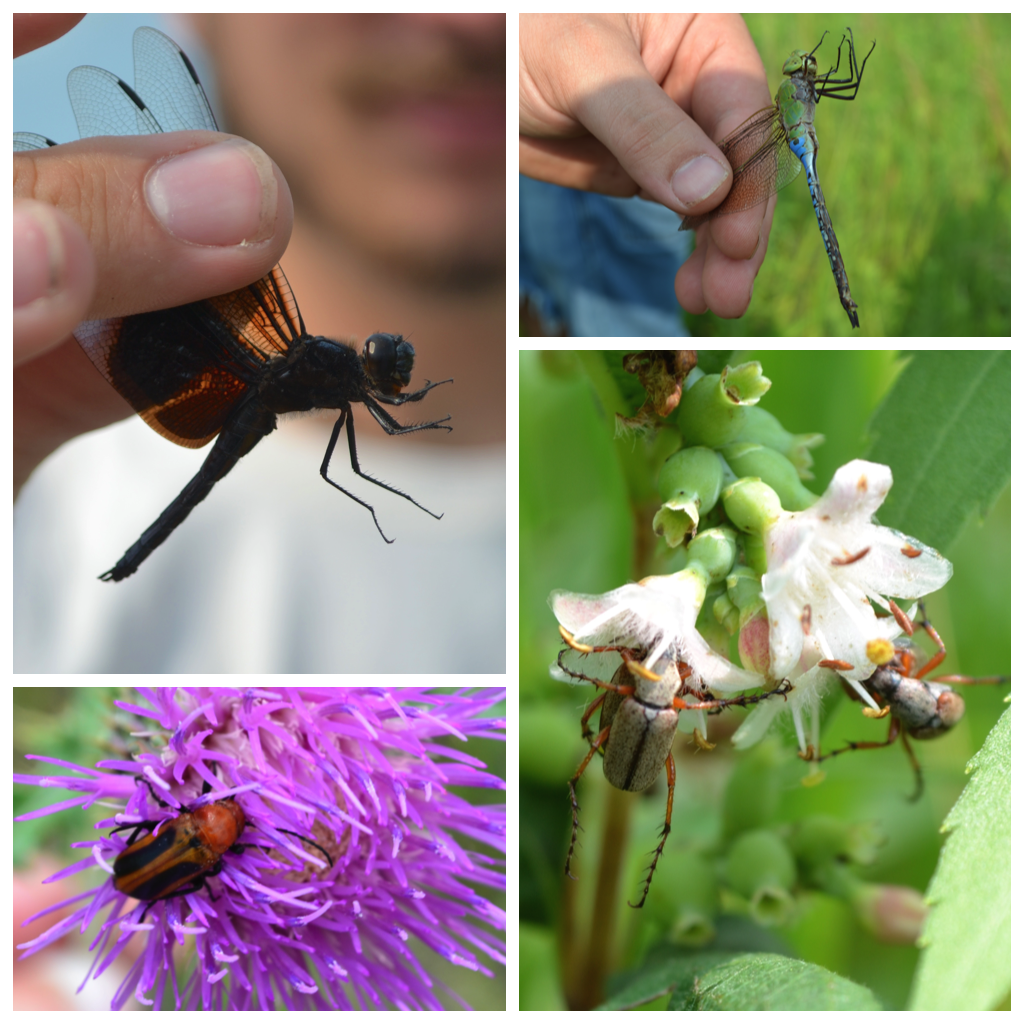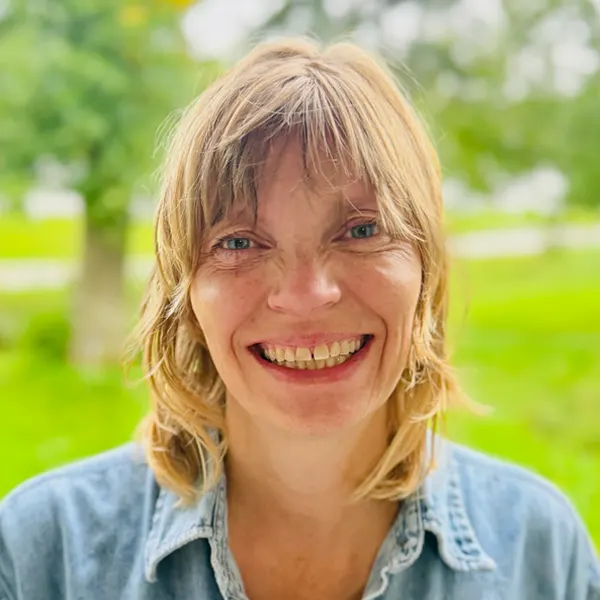Would you imagine that halloween pennant dragonflies, whorled milkweed, prairie clover, porcupine grass, and a long list of other insect and plant species could bring over 100 people together on a hot July weekend? Well they can, and people from across the state joined together to build upon their own personal knowledge of tallgrass prairie on July 10 and 11 for the 2015 Simon Lake BioBlitz.
Attendees ran the gamut from the Lac qui Parle High School YES Team to inner city gardeners from the Hope Project in the Twin Cities, from youth involved in the Akicita Teca program to area farmers and ranchers. We were also joined by volunteers from the MN Department of Natural Resources, U.S. Fish & Wildlife Service, and the Minnesota Dragonfly Society.
What is a BioBlitz you ask?
It is an ecological survey in a specific location that gathers as much data as possible on all that lives and thrives in that area.
Why do a BioBlitz?
The Chippewa River Watershed Project (CRWP), CURE (Clean Up the River Environment) and Land Stewardship Project (LSP) have come together to assess the health of the native tallgrass prairie at Simon Lake to better understand the long-term viability of grazing livestock while maintaining a balance in the native prairie ecosystem. With only one-tenth of one percent of the original tallgrass prairie remaining, it is vital that we learn as much as we can about long-term native prairie management practices to conserve this state treasure.
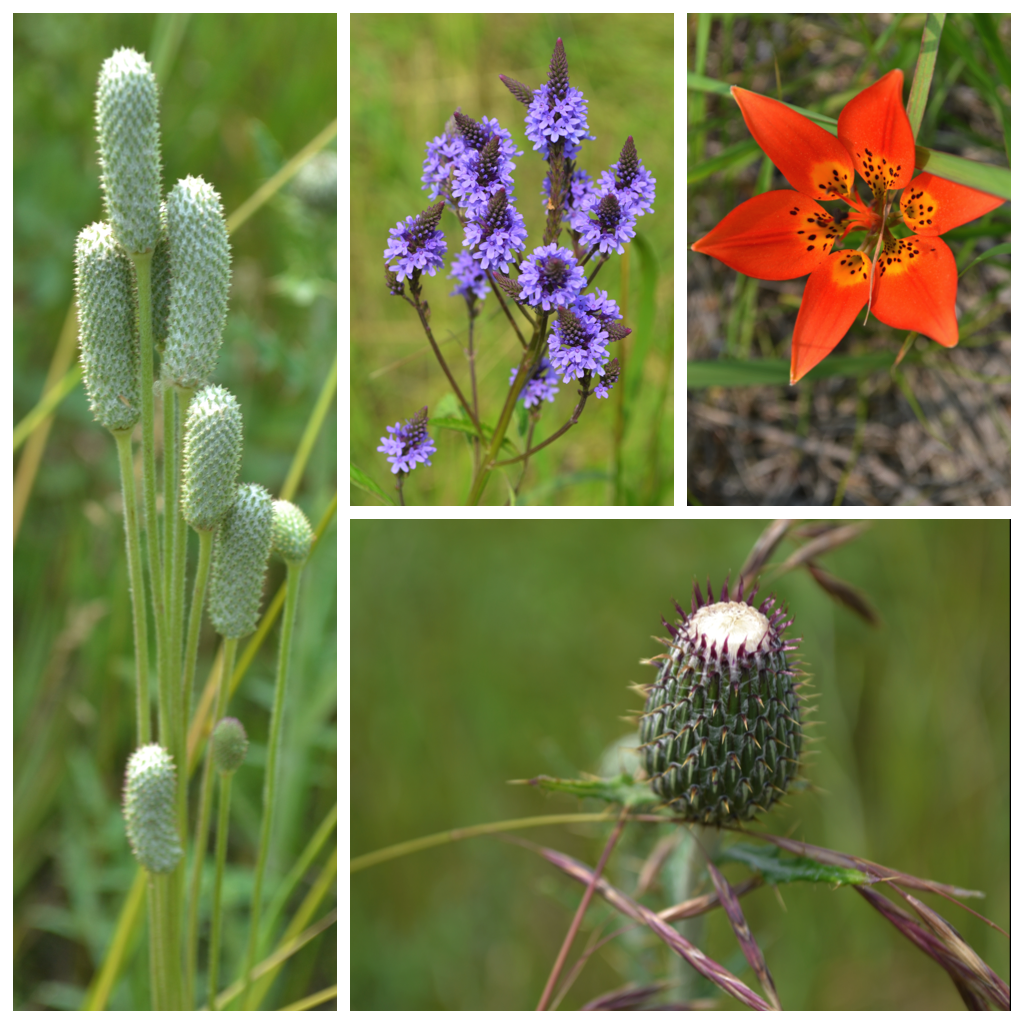
Natural ecosystems such as the one we have at Sheep Berry Fen in the Simon Lake area serve as an outdoor laboratory for research on plants and animals and their interrelationships. It is a cycle wherein native plants need livestock grazing to manage invasive plant species and promote new plant growth. Farmers need the native grasses for the cattle to produce a better and healthier product for market, and we the consumers benefit from grass-fed beef to improve the quality of our diet.
Tallgrass prairie strengthens and stabilizes our natural ecosystems and contributes to the quality of the air, soil and ultimately, the water. This BioBlitz was located in the Chippewa River Watershed, which feeds into the larger Minnesota River Basin.
What is next for Sheep Berry Fen near Simon Lake?
Our partners will continue to work with cattle owners to manage rotational grazing in the area. In three or four years, we hope to return and see what the impact of livestock is on the native prairie. At CURE, we plan to take what we have learned at both the 2014 and the 2015 Simon Lake BioBlitz events and apply that knowledge to programs in other parts of southwestern Minnesota.
Beyond all of the amazing ecological benefits we experienced and know are yet to come, one of the most important outcomes of this event was the individual learning and networking. The over 100 participants from all across the state will take what they have learned back to their work environments, classrooms, and backyards. There were many ‘aha’ moments, laughter, and new friendships developed that made up an experience that many will never forget on those two July days on that hillside in Pope County.
[srizonfbalbum id=2]
Find more photos of the 2015 Simon Lake BioBlitz on our Facebook page.
2015 Simon Lake BioBlitz hosted by Land Stewardship Project, CURE, and Chippewa River Watershed Project.
Posted by Cure MN River on Monday, July 13, 2015
Blog post written by Peg Furshong, Director of Operations & Constituent Relations and Events & Adventures Program Coordinator.

